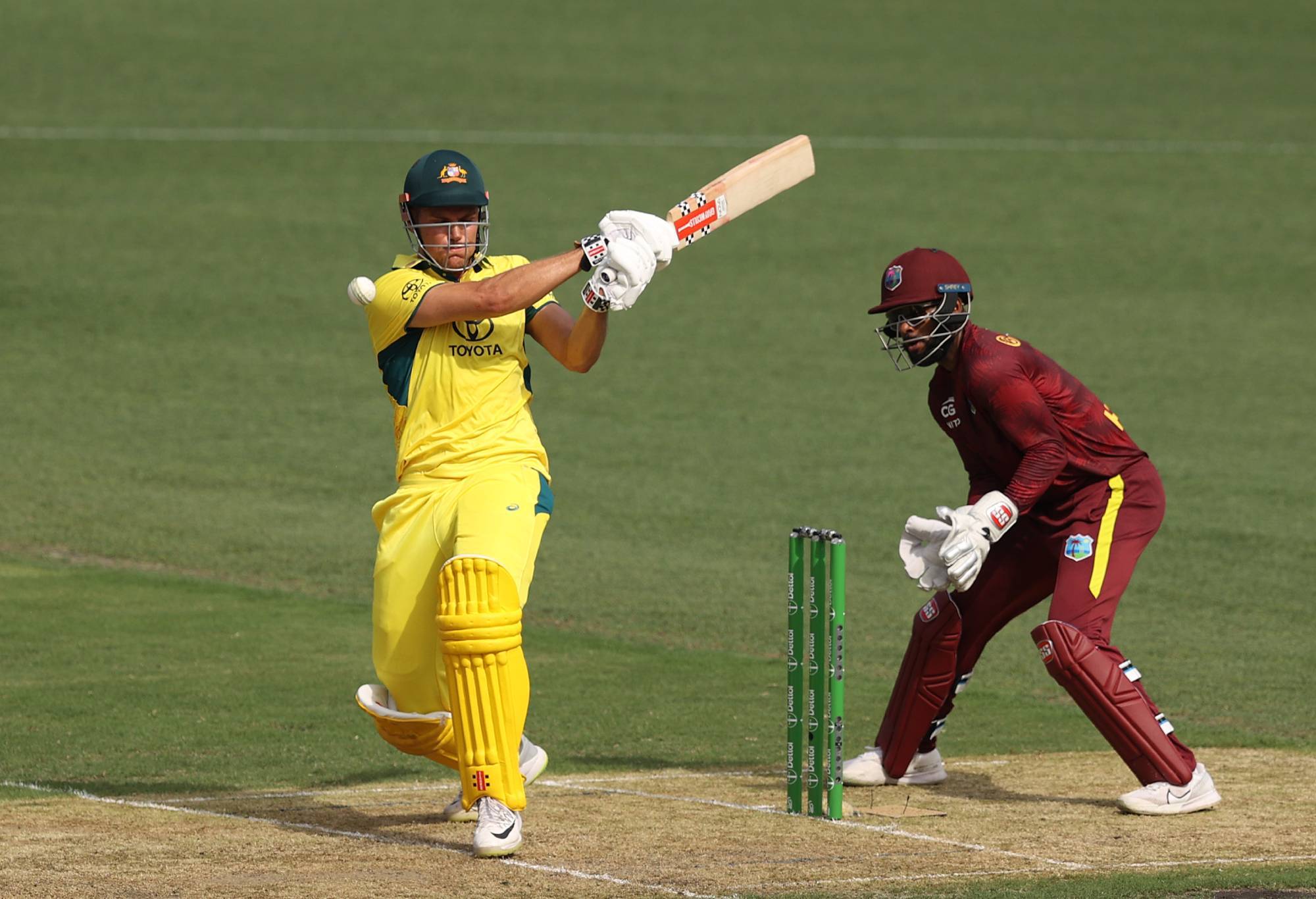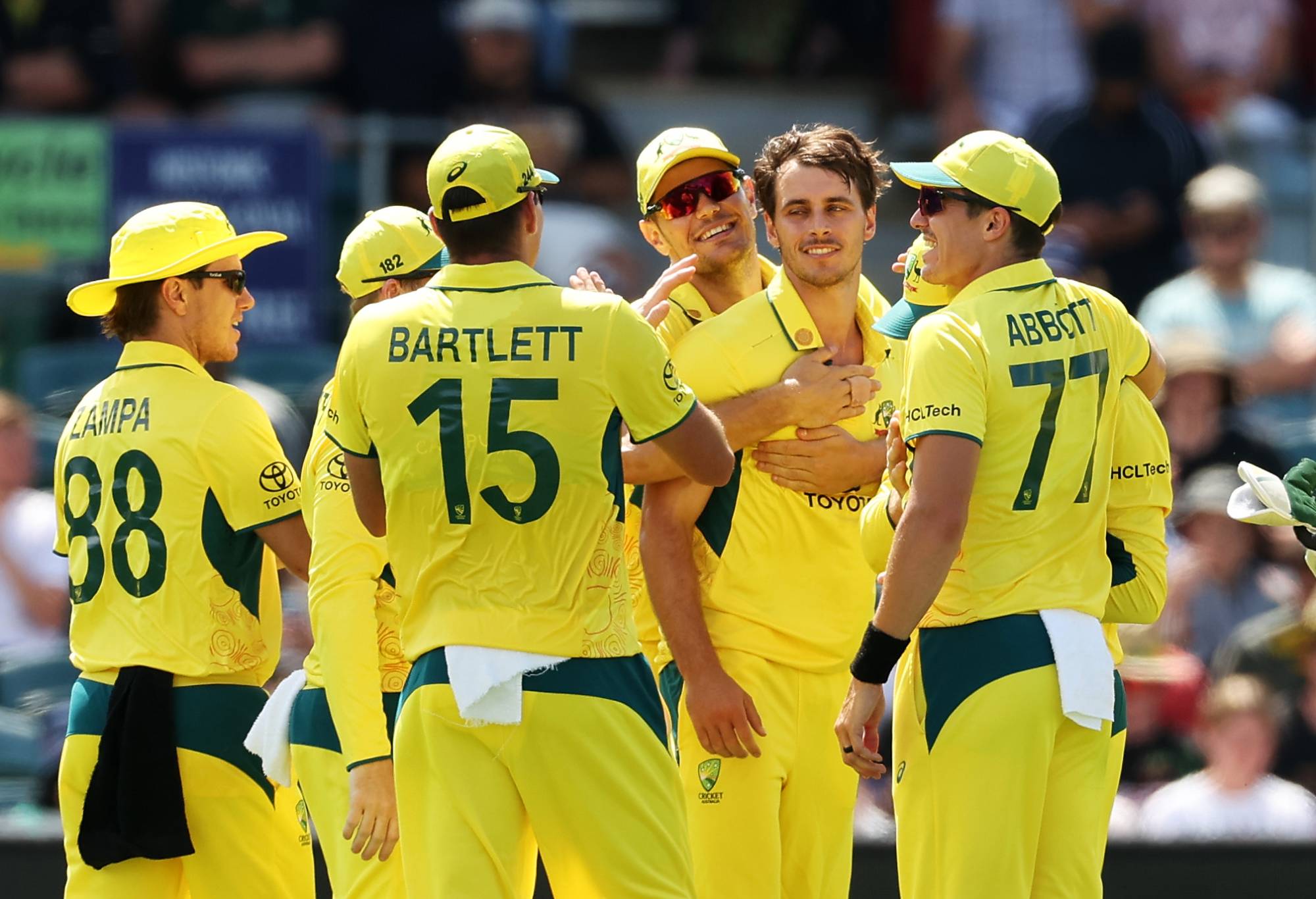When it comes to handing out baggy green caps in this sunburnt country, historically there tends to be droughts then flooding rains.
It’s a dry spell at the moment with just seven debutants receiving the most dubiously stylish piece of apparel in Australian sport over the past five years.
Prior to that there was a rush of newbies getting the call-up to the national XI with a whopping 21 in five years due to stalwarts like Michael Clarke, Mitchell Johnson and Shane Watson retiring, a few panic selections after some unexpected defeats and three heavy-handed bans after an abrasive incident in Cape Town in 2018.
All up in the 2010s there were 46 baggy greens handed out in the decade. The durability of the current bowling attack, a winning line-up and a conservative selection panel has added up to plenty of frustration for the players on the fringe of the Test side.
But another flood of baggy green rookies is set to come down the pipeline over the next few years as Usman Khawaja, Steve Smith, Nathan Lyon, Mitchell Starc and Josh Hazlewood follow David Warner into retirement.
There is suddenly an air of expectation and hope permeating around the Sheffield Shield ranks that as one of the next 66 players in line to the throne of the Test team, boyhood dreams are about to be realised for a select few.
Who will be the next 11 names added to the 466 who are on the Australian men’s Test cricket team’s role of honour?
For the purpose of this exercise, a team of candidates has been formed into a fully functioning side of five batters, an all-rounder, wicketkeeper and spinner plus three quicks, excluding current players who have already had a try at Test level like Scott Boland, Jhye Richardson, Todd Murphy and the opening trio of Cameron Bancroft, Marcus Harris and Matt Renshaw.
Openers: Sam Konstas and Sam Whiteman
The top of the order is a problem area for Australia with Usman Khawaja turning 38 in December and the openers at state level hardly banging down the selection door.
Konstas has been identified as a potential generational talent with national coach Andrew McDonald saying he’s an outside chance of a Test call-up after his twin hundreds for NSW last week but scores of two and 43 against Victoria have underlined the fact that at 19, he’s still got a long way to go before he is ready to succeed at the international level.

Sam Konstas. (Photo by Mark Evans/Getty Images)
South Australia’s Henry Hunt and Victoria’s Campbell Kellaway have top-order potential but with averages hovering around 30 at first-class level while Jake Fraser-McGurk is another prospect who has struggled even more so at Shield level and his international future looks set to be restricted to the white-ball formats.
Western Australian skipper Sam Whiteman has toiled away at domestic level for more than a decade with 16 tons from his 108 matches at a decent but hardly stunning clip of 37.53 but will be 33 before the summer is out.
Middle order: Nathan McSweeney, Ollie Davies and Beau Webster
Batting in general is looking a little light on for Australia at the next level down. Webster starred with 938 runs for Tasmania last summer and the lanky 30-year-old is not without a hope of a Test call-up in the next year or two if he can maintain that kind of form.
Davies announced himself as a star of the future last summer with three tons for NSW to be one of the rare Australian state batters averaging over 50 at first-class level (51.68 after 10 matches) and at 24, he is at the right age for the national selectors who need to bring young legs into their ageing line-up. But after a couple of 30s last week against South Australia he was squeezed out of the Blues XI to face Victoria with Steve Smith making a rare Shield appearance.
McSweeney, like state teammate Travis Head before him, was thrust with the captaincy at South Australia at a young age and it hasn’t affected his form. He will lead Australia A against their Indian counterparts next week and an unbeaten ton against NSW last week certainly boosted his hopes of becoming the next designated cab off the rank if a middle-order spot opens up.
All-rounder: Aaron Hardie
Already a member of Australia’s white-ball squads, the 25-year-old seamer had a down year with the bat last summer for WA but now that Cameron Green is out for six months with a back injury, he would be the likely replacement if yet another Sandgroper in Mitchell Marsh was unavailable for the five-Test showdown with India.

Aaron Hardie bats during game two at Sydney Cricket Ground. (Photo by Jason McCawley – CA/Cricket Australia via Getty Images)
Hardie averages over 40 with the bat and has taken a handy 63 wickets at 28.53 in 33 first-class matches so the talent is there even if the opportunity may take a while to present itself.
Wicketkeeper: Josh Inglis
He needs to be careful he doesn’t end up like Glenn Maxwell and Adam Zampa by becoming an occasional red-ball cricketer because of his status now as Australia’s first-choice keeper in the ODI and T20 teams.
He only turned out three times for WA last summer but managed a ton in those six knocks and with Queensland rival Jimmy Peirson likely too old now at 32 to get a run at Test level, Inglis has the inside running to get the gloves from Alex Carey down the track.
Interestingly Inglis is already 29 himself and it seems to be a recurring theme now for Australia’s wicketkeepers that they serve a lengthy apprenticeship while waiting out the incumbent, a la Adam Gilchrist, Brad Haddin, Tim Paine and Alex Carey.

Corey Rocchiccioli. (Photo by Paul Kane/Getty Images)
Spinner: Corey Roccichiolo
He has jumped ahead of a few rivals in the battle to be Nathan Lyon’s successor. The Western Australian offie was outstanding last summer in taking 46 wickets at 27.6 to be the third on the overall list, the most by a finger-spinner in more than 30 years.
Roccichiolo has been rewarded with a call-up to Australia A for the upcoming series of two four-dayers in Mackay and the MCG. A berth on the tour to Sri Lanka early next year is in the offing and because he bowls with a higher action that generates more bounce than Lyon, he’s a chance to play alongside him in the Test side like Todd Murphy did last year in India.
Quicks: Lance Morris, Spencer Johnson and Xavier Bartlett
This is where Australia has more depth than they know what to do with.
First there’s the tried and true performers in Scott Boland, Michael Neser and Jhye Richardson, who have shown they can cut it against Test quality batters.
Morris was perilously close to making his Test debut last summer but the main quicks remained on the park and the selectors didn’t give him a whirl. A thigh injury on top of a back problem has delayed his entry into the Shield this summer but he will surely get a run in the Test team sooner rather than later with his peerless air speed.

Lance Morris. (Photo by Matt King/Getty Images)
Johnson is another seamer who has been hampered by injury with a side strain ending his white-ball tour of England prematurely recently but the left-armer is viewed as Starc’s successor as the Australian attack’s point of difference.
Bartlett’s hopes of adding a Test cap to his ODI and T20 appearances have also suffered a setback due to a side strain and he is hoping to return for Queensland in the next Shield round to put his name back before the selectors.
Throw in the likes of Nathan McAndrew, Fergus O’Neill, Jordan Buckingham and perennial fringe dweller Mark Steketee and there is a surfeit of riches for the national selectors when it comes to fast bowling options.
>Cricket News

%20(3).jpeg)




0 Comments